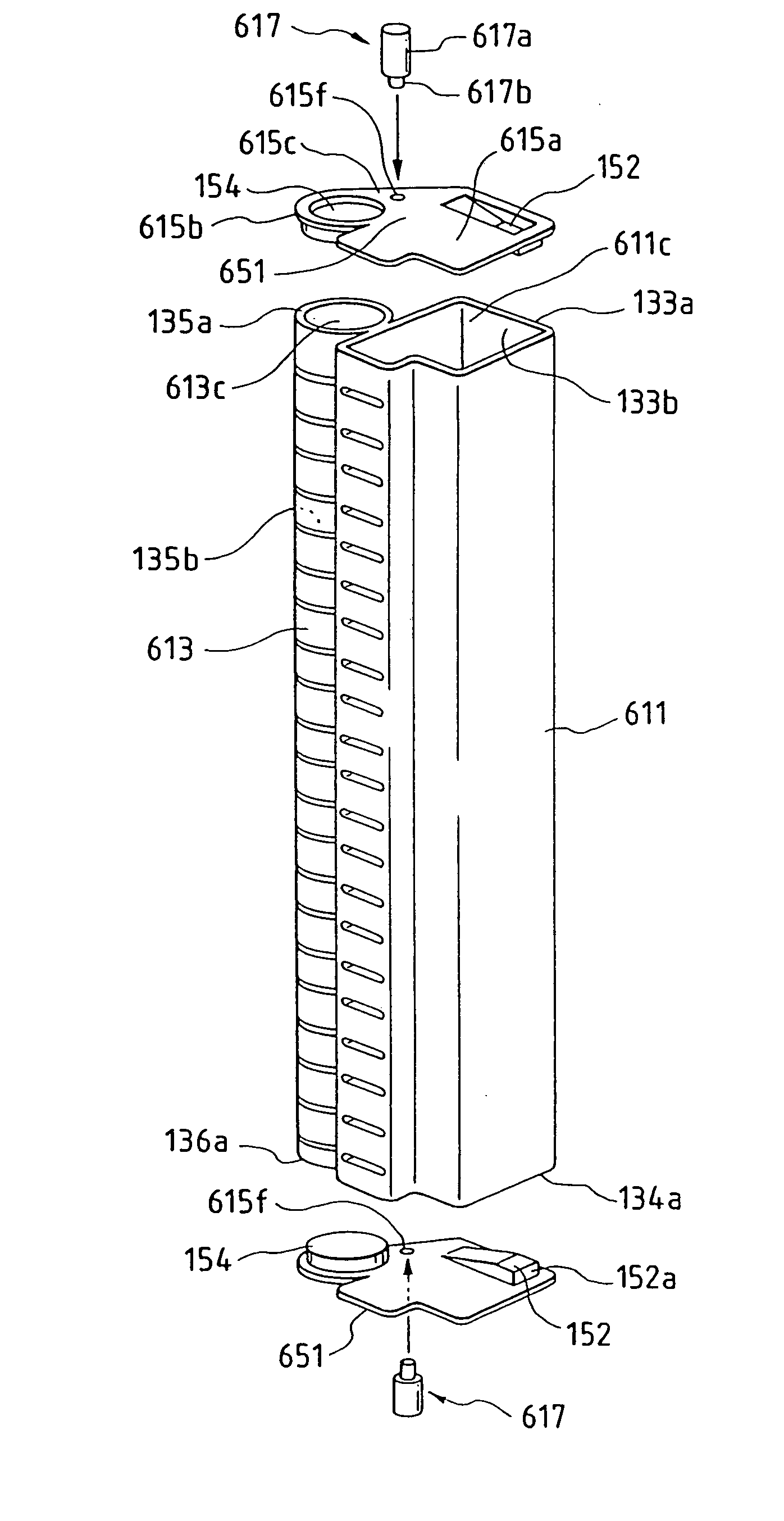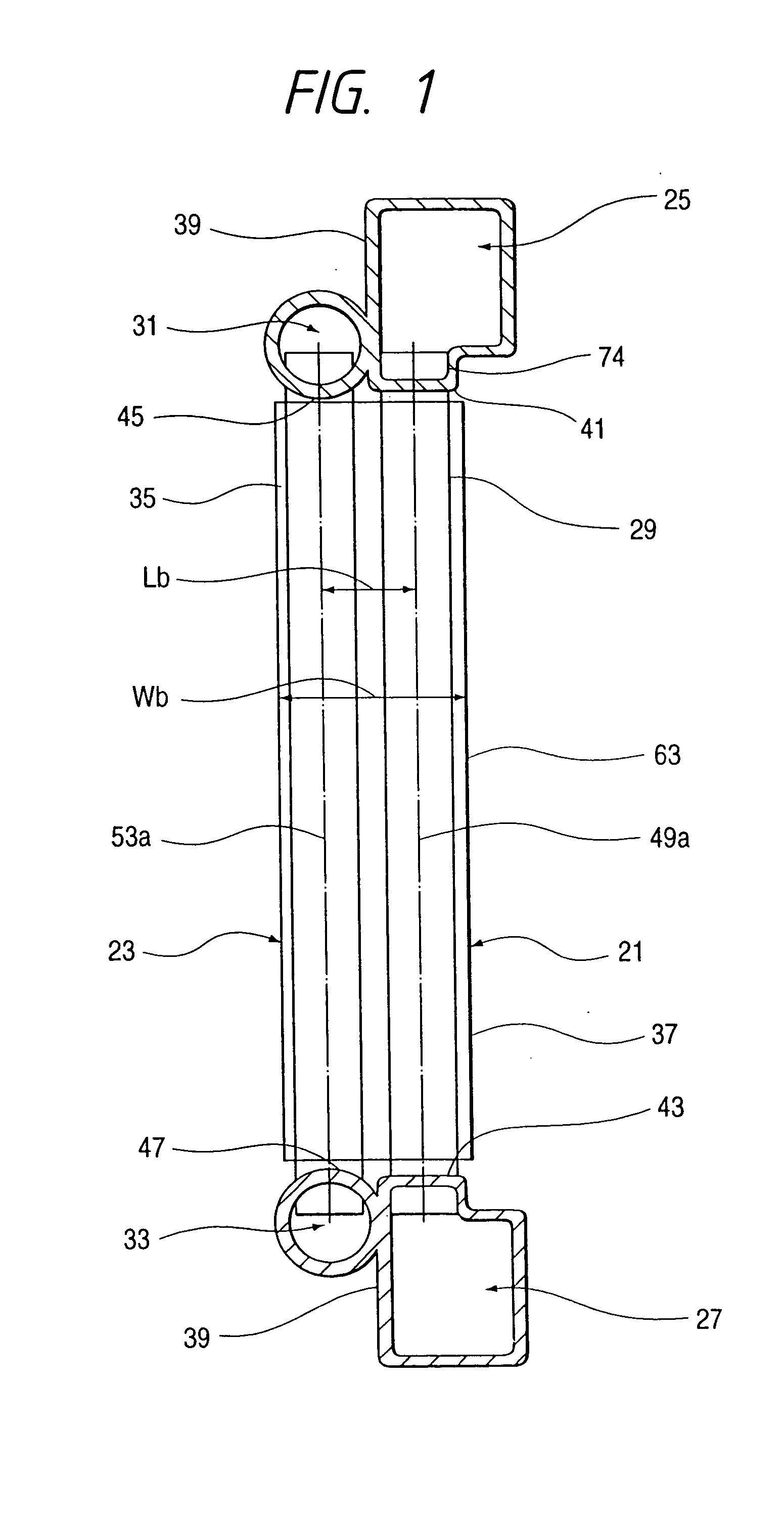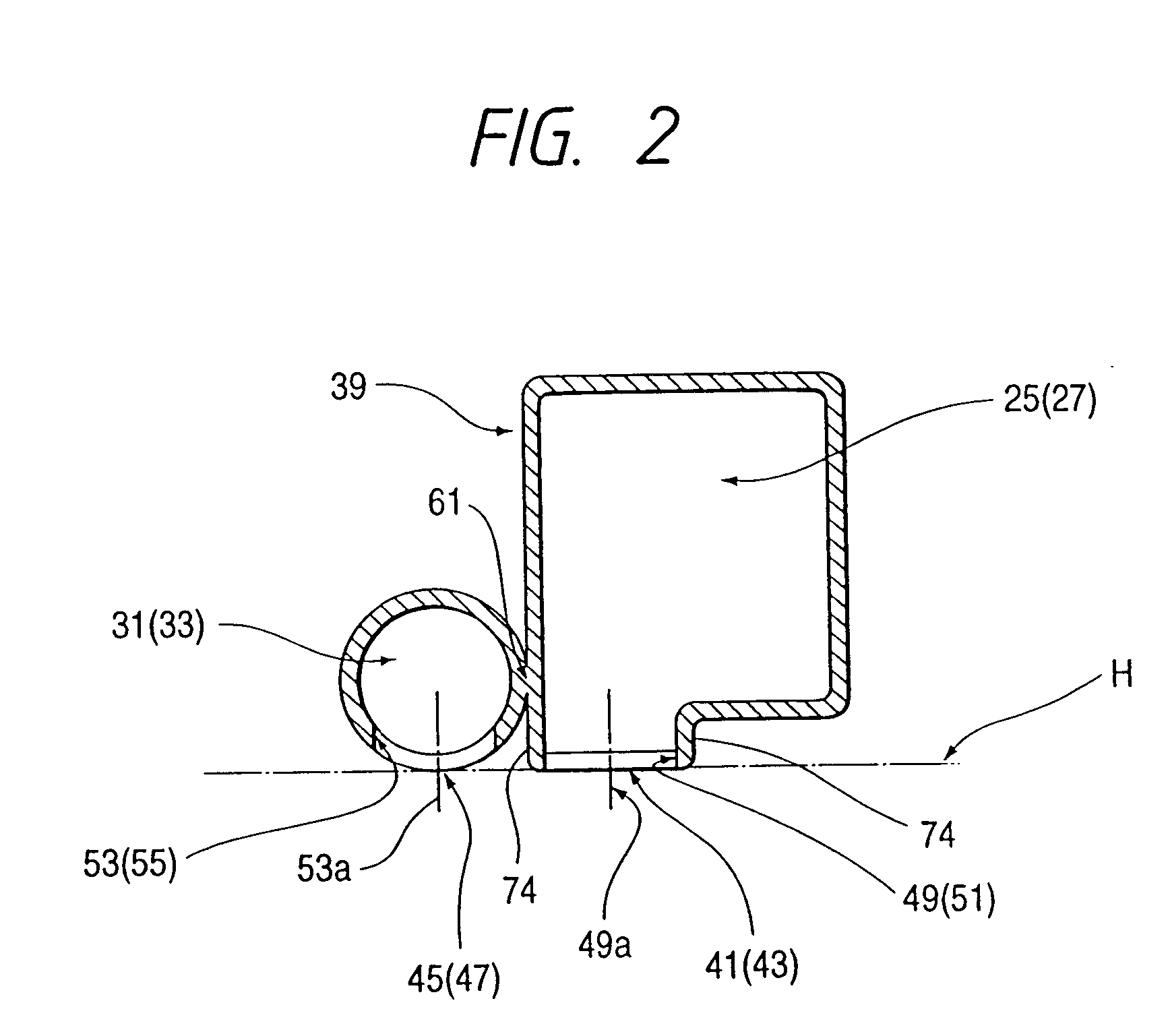Integral-type heat exchanger
a heat exchanger and integrated technology, applied in indirect heat exchangers, stationary tubular conduit assemblies, lighting and heating apparatus, etc., to achieve the effect of simple structure and reduction of the thickness of the heat radiation section (or core)
- Summary
- Abstract
- Description
- Claims
- Application Information
AI Technical Summary
Benefits of technology
Problems solved by technology
Method used
Image
Examples
1st embodiment
[0077] FIGS. 1 to 4 illustrate a first embodiment of an integral-type heat exchanger according to the present invention. In the drawings, reference numeral 21 designates a first heat exchanger constituting a radiator, and reference numeral 23 designates a second heat exchanger constituting a condenser. Incidentally, the inlet and outlet pipes, filler neck, or other members of the first and second heat exchangers are omitted in the drawings.
[0078] Tanks 25, 27 of the first heat exchanger 21 and the tanks 31, 33 of the second heat exchanger 23 are integrally molded from aluminum (e.g., A3003) by extrusion.
[0079] The tanks 25, 27 of the first heat exchanger 21 have rectangular cross sections, and the tanks 31, 33 of the second heat exchanger 23 have circular cross sections. The tanks 31, 33 of the second heat exchanger 23 are in contact with and are formed integrally with lower part of plane sections 39 formed in the side walls of the tanks 25, 27 of the first heat exchanger 21 throu...
2nd embodiment
[0099] The details of a second embodiment of the present invention will be described hereinbelow with reference to FIGS. 7 to 10. In FIG. 7, the common fin 37 to the first and second heat exchangers is used. However, is may be possible to adopt separated fins of each first and second heat exchangers.
[0100]FIG. 7 illustrates an integral-type heat exchanger which employs integral-types heat exchanger tanks according to this embodiment.
[0101] As illustrated in FIGS. 7, 9 and 10, end plates 151 made of brazing-material-clad aluminum (e.g., A4343-3003) are attached to open ends 133a, 134a, 135a, and 136a of the first and second heat exchanger tanks 25, 27, 31, and 33. The brazing material is positioned on the surface side facing the heat exchanger tanks. FIG. 8 shows a perspective view of integral-type heat exchanger tanks according to this embodiment.
[0102] Each end plate 151 is made from a single plate material which closes the first heat exchanger tanks 25, 27 and the second heat e...
3rd embodiment
[0112] In a third embodiment of the present invention, as illustrated in FIGS. 13 to 16, two attachment slots 251, 252 are formed in the second heat exchanger tanks 31, 33 so as to extend up to the joint 61. Partitions 252 which have a substantial ohm-shaped geometry and comprise brazing-material-clad aluminum (e.g., A4343-3003-4343; the brazing material being positioned on the both surface of the partition 252) are fitted into the attachment slots 251.
[0113] The partition 252 comprises a closing plate 253 which has the same shape as that of the attachment slot 251, and a lock piece 254 to be locked into the joint 61 between the first and second heat exchanger tanks 25, 27, 31, and 33.
[0114] In the integral-type heat exchanger having the foregoing structure according to the embodiment, the partitions 252 are fitted into the attachment slots 251 formed so as to extend up to the joint 61, with the lock piece 254 being inserted first. When a front end 254a of the lock piece 254 has c...
PUM
 Login to View More
Login to View More Abstract
Description
Claims
Application Information
 Login to View More
Login to View More - R&D
- Intellectual Property
- Life Sciences
- Materials
- Tech Scout
- Unparalleled Data Quality
- Higher Quality Content
- 60% Fewer Hallucinations
Browse by: Latest US Patents, China's latest patents, Technical Efficacy Thesaurus, Application Domain, Technology Topic, Popular Technical Reports.
© 2025 PatSnap. All rights reserved.Legal|Privacy policy|Modern Slavery Act Transparency Statement|Sitemap|About US| Contact US: help@patsnap.com



